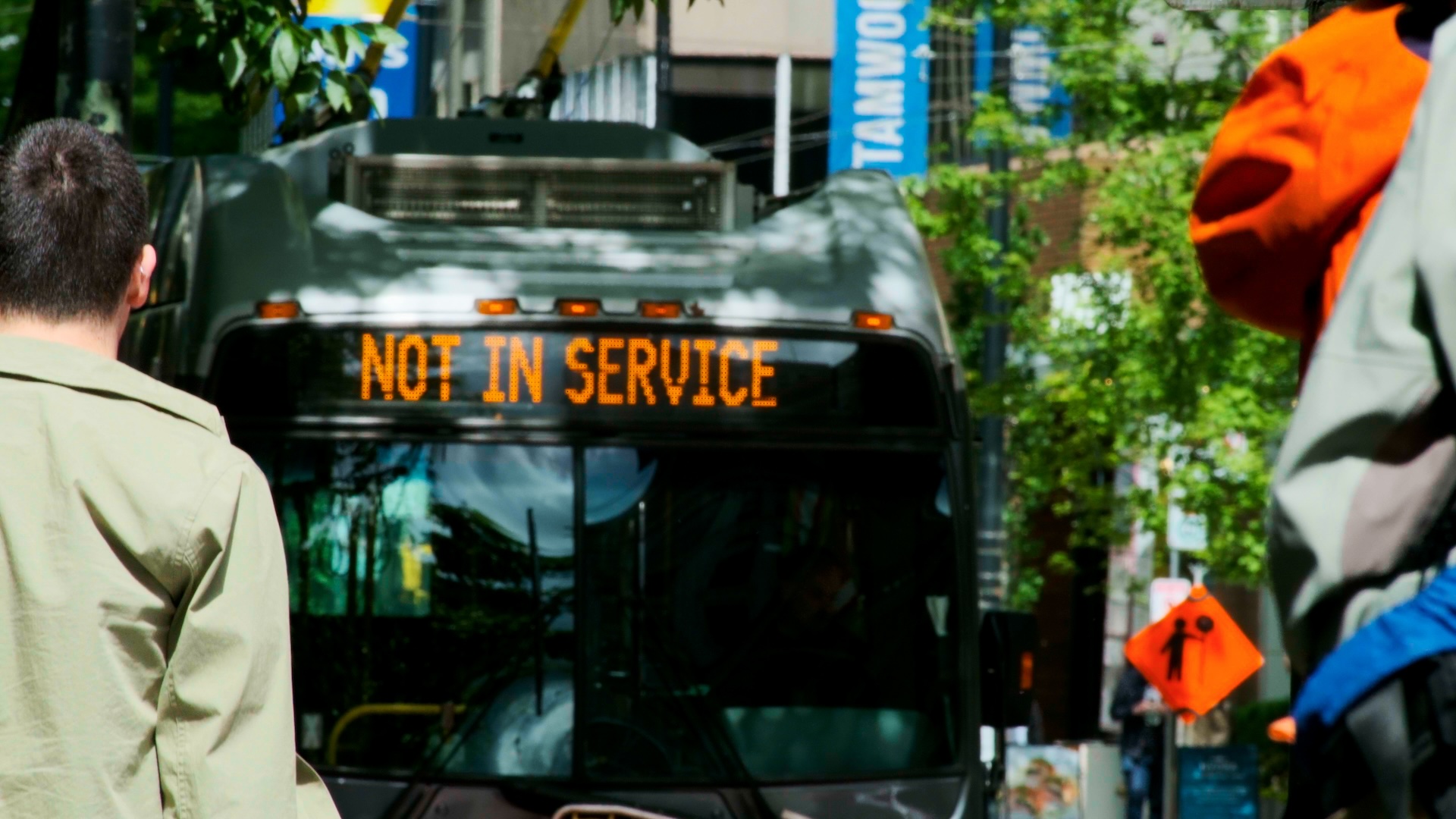A message from the TransLink CEO on the Potential Transit Impacts Report
A message from the TransLink CEO on the Potential Transit Impacts Report

As the CEO of TransLink, I’m committed to the highest level of transparency and responsibility for our operations. The Potential Transit Impacts Report, requested by the Mayors’ Council and released today, describes potential service cuts, should funding not be secured prior to reaching our fiscal cliff at the end of next year, when provincial relief funding runs out.
The scenarios contained in this report are hypothetical, but they outline the real decisions we would have to make without a new funding solution. This report is not intended to cause alarm, but rather, to provide a clear and honest assessment of the reality we are facing in Metro Vancouver.
We have been vocal about our broken funding model for some time. Our financial crisis is due to several structural problems, including declining gas tax revenues as the region shifts toward electric vehicles, fare increases held below inflation due to provincial agreements, and new transit projects and services requiring significant new resources to operate once complete.
Recently, we undertook an independent efficiency review and initiated $90 million in annual corporate cost savings and additional revenue measures, but these actions alone will not come close to closing our funding gap.
This has left us at a crossroads where we must consider what transit service could look like if we don’t find a permanent funding solution, including:
- Bus service may be cut in half, including cancelling 145 bus routes and all NightBus services.
- There would be almost no transit services operating in Langley, White Rock, South Delta, Port Coquitlam, Maple Ridge, Pitt Meadows, and much of the North Shore.
- West Coast Express could be eliminated.
- SkyTrain and SeaBus could face significant service reductions.
- Reducing HandyDART by 35 per cent.
- Eliminating the Local Government Funding Program, which invests in road maintenance and local infrastructure upgrades.
Regardless of if you take transit, the impacts would be felt by everyone in the region, which is why we have the responsibility of releasing this report. This potential future would leave hundreds of thousands of people needing new ways to travel — drastically impacting congestion, hindering our ability to meet transit-oriented housing policies, and preventing us from supporting this region’s unprecedented growth. With our region facing record-setting population growth, a housing affordability crisis, important GHG emission reduction goals, and the need to compete economically on a global stage, now is the time to be rapidly expanding rather than cutting our transit service.
We are doing everything in our power to prevent these cuts and continue to deliver the reliable and robust transportation system this region needs.
We must rethink how transit is funded in this region so we can meet the needs of our growing population after four years of frozen service levels and avoid the disastrous consequences of reaching the edge of our financial cliff. We need support from all levels of government to secure a new, sustainable funding model and we remain committed to working alongside these partners to ensure transit has sustainable sources of funding to deliver service for generations to come.
Translations
Kevin Quinn, TransLink CEO
Kevin Quinn is the Chief Executive Officer of TransLink, Metro Vancouver’s award-winning transportation authority. As CEO, Kevin Quinn oversees management, planning, financing, and delivery of a growing world-class transportation network that includes bus, SkyTrain, SeaBus, HandyDART, and West Coast Express transit services, along with five regional bridges, walking and cycling paths, and the Major Road Network.






I am sitting in the Brentwood mall bus for route to UBC. The #25 bus which arrived at 8:22am. Schedule says it leaves at 8:23am. The driver went for a pee break as I saw him go to the gas station. Another 25 bus passes me!!! What the heck happened??